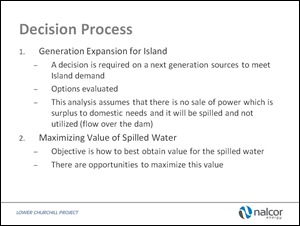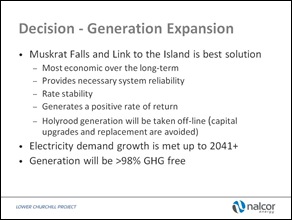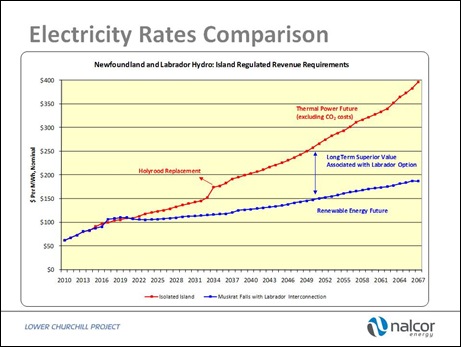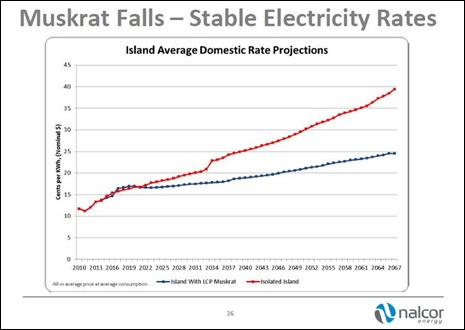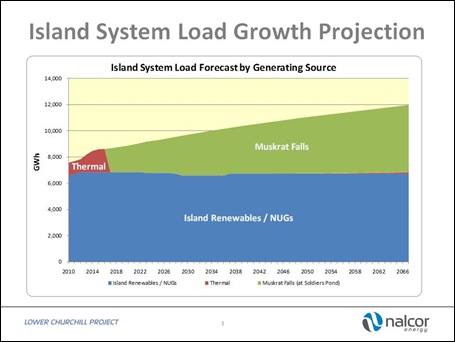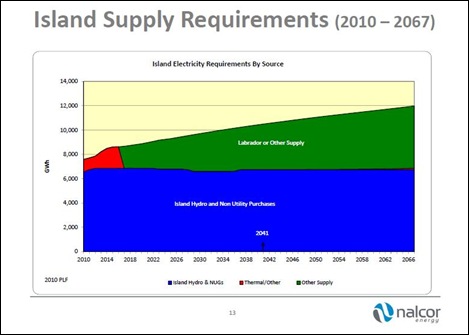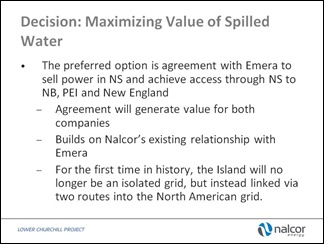After all this time, some of you will find it interesting to go back and look at some slides from the original Nalcor “technical briefing” on Muskrat Falls delivered in November 2010.
The ”last saved” date on the deck is 25 November 2010
Compare it to the briefing Nalcor gave to the public utilities board, for example, in July 2011. Notice how much changed.
Two parts to the decision.
First is generation expansion.
Not replacement.
Expansion.
This part of the decision assumes that they don’;t do anything with the surplus but spill it.
The second part of the process involved how to get the most out of the water. This is the bit you need to pay attention to as we go along.
Stay tuned this is gonna get really rough for some people.
This part is going to look familiar.
Most economic over the long term. System reliability.
Positive rate of return.
That means they can make money off provincial taxpayers and nothing more. remember, they just plan to spill the surplus in this part of the decision process.
Note that second bullet – there’s that connection to 2041 that they used to include routinely.
Have a look at this one in larger size. On the left side, the scale is dollars per megawatt hour.
Note the spot marked for the Holyrood replacement in the mid 30s.
Now look at the 2011 version.
Notice that the little annotations are gone.
The title is changed.
The cost on the left margin is changed to cents per kilowatt hour.
And they have also shifted the scale a bit.
But if you look at the blue lines you will see something really interesting. The price goes up. It’s gone up about $60 or $70 per megawatt hour all the way along.
The red line – the isolated island cost – is about the same.
Remember that except for the media, the political parties and few others, most people in the public have never seen the original November 2010 slide deck.
In the original technical briefing, Nalcor included a slide called “Island System Load Growth Projection”. It showed thermal generation disappearing before 2020 with existing island renewables carrying on. On top, something labelled “Muskrat Falls” would add all this extra generation.
Compare it to the slide that shows up in the July 2011 briefing to the PUB.
Now we are no longer talking about growth, as in November 2010.
Now we are just talking about supply “requirements”. And what used to be Muskrat Falls is called “Labrador and Other Supply”. Funny thing is, though, that the only label that changed its meaning is the green bit. It isn’t called Muskrat Falls any more.
The blue bit is the same.
The chose not to label the red bit.
As it seems the thermal option has been blended. After all, the Muskrat falls option includes the construction of more thermal generation than is currently installed at Holyrood.
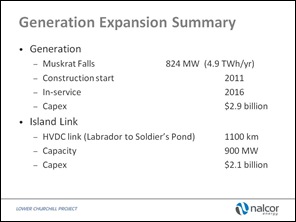 In November 2010, Nalcor predicted construction would start in 2011 with first power by 2016.
In November 2010, Nalcor predicted construction would start in 2011 with first power by 2016.
As we learned later on, one of Nalcor’s consultants thought their timelines were mucho optimistic.
There’s that old cost estimate, too. $5.0 billion for the line to the island and one dam.
Now we get to the fun bit.
In November 2010, Nalcor played up the use of surplus electricity for export.
No mines.
All export.
Some people have argued that the single line mentioning industrial development in Labrador means that the provincial government always had feeding mines as an option.
Ummm.
Not really.
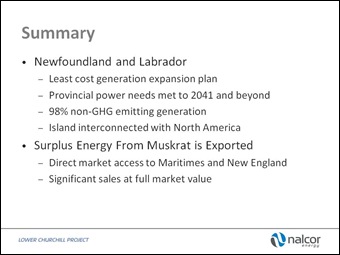 The original technical briefing played up the export markets.
The original technical briefing played up the export markets.
You can see it in the summary slide – the last one in the deck.
Look at those last words: “significant sales at full market value”
Nothing about feeding power to mines in Labrador.
Interesting, huh?
-srbp-
